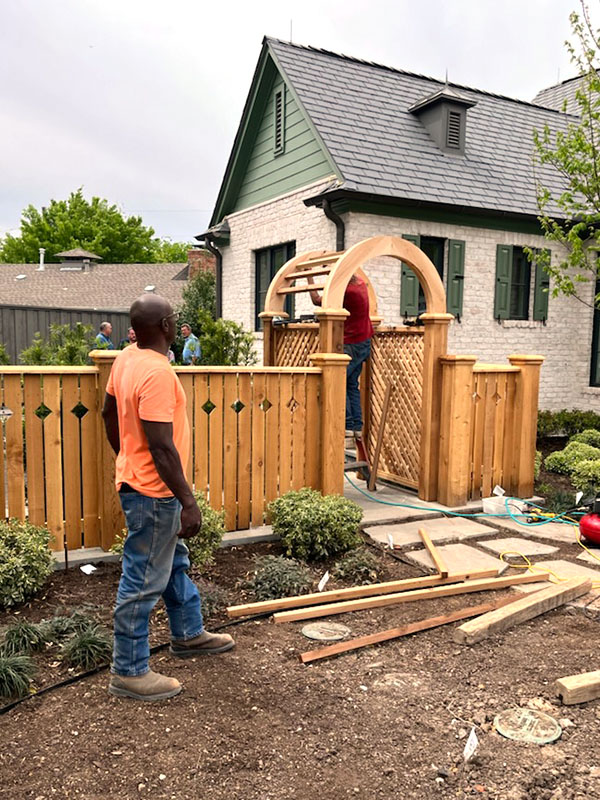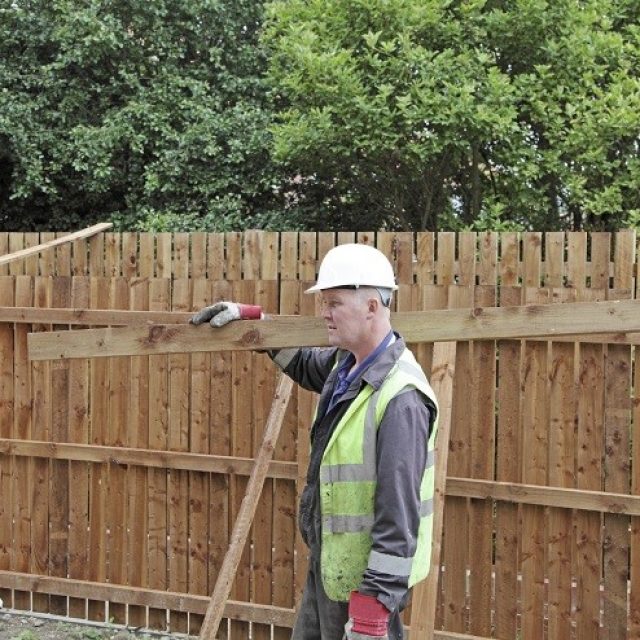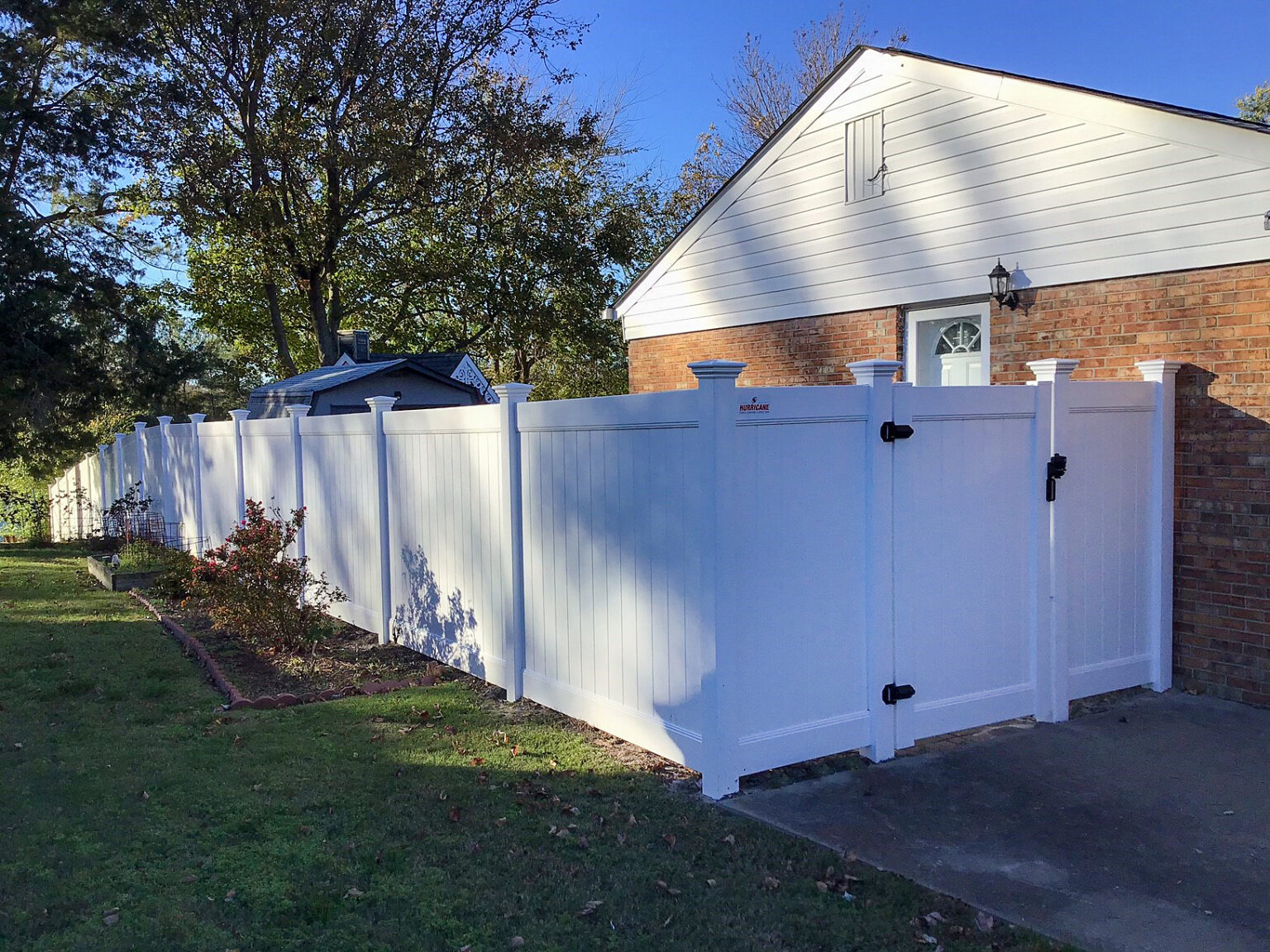Budget-Friendly Services from a Regional Fence Contractor Owensboro KY
Wiki Article
Exactly How to Determine Common Concerns That Call For Immediate Fencing Repair
It is essential to detect problems prior to they become bigger problems when it comes to keeping your fencing. Consistently looking for signs of rotting wood, leaning panels, or rust can conserve you time and money in the future. You may not realize just how weather and insects can compromise your fence's integrity. Let's discover the common signs that suggest your fencing requires prompt attention, so you can keep your residential or commercial property safe and looking its best.Indicators of Rotting Wood in Wooden Fences
Have you noticed your wooden fencing looking a little bit even worse for wear? It may be time to inspect for signs of deteriorating wood if so. Examine the base of the messages and panels for soft areas. That's a clear sign of rot if you push on the timber and it really feels mushy or falls apart. Next, seek staining or dark areas on the timber-- these usually signal moisture damages. Take note of any peeling off paint or coating, as this can reveal the timber to more degeneration. Furthermore, a poignant, moldy smell can show fungal growth. Don't forget to evaluate links and joints; if they hang or breaking down, the timber under is likely compromised. By capturing these signs early, you can stop more substantial damages and keep your fencing standing strong. Normal maintenance is key to expanding the life of your wood fencing.Leaning or Tilting Fencing Panels
If you've discovered your fencing panels turning or leaning, it's important to recognize what created it. This issue may suggest underlying architectural damages that needs your interest. Let's check out the typical causes and the repair work alternatives offered to get your fencing back in form.
Root Causes Of Leaning Panels
It's often a sign of underlying problems that require addressing when you observe your fencing panels leaning or tilting. One common cause is inadequate water drainage; extreme water can deteriorate the soil around the fencing articles, deteriorating their assistance. One more culprit can be strong winds or storms that press against the panels, especially if they're not effectively secured. In addition, the natural settling of dirt with time can cause blog posts to shift, causing a tilt. Pests, like termites, can jeopardize the stability of wood panels, causing them to lean. Poor installation methods might result in panels not being securely established, leaving them at risk to leaning under pressure. Address these concerns immediately to keep your fence's integrity.
Indicators of Structural Damage
Seeing leaning or tilting fencing panels can be alarming, as these problems often suggest structural damages that needs prompt attention. When your fence starts to lean, it might indicate that the posts are moving or that the dirt around them has actually worn down. Pay close attention to spaces in between posts or panels, as these can likewise recommend instability. deck builder. Additionally, look for splits or splintering in the timber, which can compromise the general structure. If you see corrosion or rust on steel elements, it might compromise the honesty of the fencing. Remember, disregarding these indications can lead to extra extreme damage down the line, so it's necessary to assess the scenario quickly and do something about it before it intensifiesFixing Options Available

Rust and Corrosion in Steel Fences
If you possess a metal fencing, you may see rust and rust sneaking in over time, especially if it's subjected to moisture. These issues not just influence the appearance of your fence but can likewise compromise its architectural stability. To identify rust, look for reddish-brown areas or spots, which show the metal is oxidizing. Rust can spread out swiftly if left untreated, weakening the fence and leading to pricey repairs.To deal with corrosion and deterioration, you should clean the impacted areas with a cable brush and use a rust-inhibiting primer. Once the guide dries out, take into consideration repainting the fencing with a weather-resistant paint to safeguard it further. Routine upkeep, such as examining for indicators of corrosion and touching up paint as needed, will certainly help extend your fence's lifespan. Resolving these problems promptly assures your steel fencing remains strong and visually appealing for many years to come.Cracks and Divides in Vinyl Fence

Root Causes Of Vinyl Damages
Vinyl fence is preferred for its resilience, yet it can still endure from cracks and divides as a result of various factors. One major reason is severe temperature level fluctuations. When plastic increases in the warmth and contracts in the cool, it can compromise the product in time. Additionally, direct exposure to severe sunlight can cause UV deterioration, making the plastic fragile. Physical effects, like accidental accidents or hefty branches, can likewise create cracks. Poor installation or making use of low-quality materials can aggravate these issues. Additionally, age plays a function; older vinyl fencing is extra vulnerable to damage. Normal examinations can help you recognize these aspects before they lead to significant problems. Take positive steps to ensure your fencing remains solid and undamaged.Repairing Cracks Effectively
Although fractures and splits in your vinyl secure fencing can be worrying, resolving them without delay can protect against more damage and keep the fencing's look. Analyze the size of the fracture. For tiny cracks, a vinyl repair kit commonly includes adhesive that can bond the sides, supplying a smooth fix. Tidy the area completely prior to using the glue, ensuring it sticks appropriately. For larger divides, you might need to make use of a vinyl patch. Cut the patch to size, use glue around the sides, and press it strongly onto the split. Allow it to cure as per the supplier's instructions. Regular maintenance and fast repair work can expand your fencing's life-span, maintaining it looking excellent for many years to find.Loose or Missing Fence Posts
Loose or absent fence articles can undermine the security of your entire fencing structure. If you observe any kind of blog posts tottering or leaning, it's essential to resolve the concern instantly. Look for any type of indicators of activity, as this can result in additional damage with time. You can easily analyze the problem by giving each post a gentle shake-- if it really feels unstable, it's time to take action.For missing out on articles, you'll need to replace them asap to maintain your fencing's honesty. Make certain they're firmly anchored in the ground with concrete or gravel for added stability when you mount brand-new articles. If a blog post is loose, tighten it by adding extra assistance or driving it deeper right into the ground.Ignoring these concerns can bring about larger problems, like voids in your fencing or even total collapse. Maintain an eye on your posts and stay positive regarding fixings!Damages From Weather and Natural Environment
Weather condition and all-natural aspects can ruin your fencing, bring about different kinds of damages that require punctual attention. Hefty rain can trigger timber to rot, making it weak and unstable. Snow accumulation could flex or break panels, while strong winds can root out fencing articles or cause sections to lean.If top article you notice fractures or splintering in wood fences, it's a sign of drying because of extreme sunlight exposure. Meanwhile, metal fencings can rust if protective finishings subside, particularly in seaside or moist areas.Inspect your fencing frequently after tornados or extreme climate to capture any type of damage early. Addressing these issues quickly can save you here are the findings from expensive fixings down the line. Don't wait until a little problem transforms right into a significant one; stay positive and keep your fence in leading form to keep both capability and aesthetic appeal.Insect Problem and Termite Damages
It's important to act promptly to prevent more devastation when you notice indications of insect invasion or termite damages. Try to find mud tubes along your fence or hollow-sounding wood, as these show termites are at job. You may additionally see tiny holes or frass, which is termite droppings resembling sawdust. If you find any of these indicators, it's time to examine the damage.Don' t delay till it's far too late; insects can compromise your fencing's integrity. Evaluate the surrounding location for ants or beetles, as they may be adding to the trouble. If you suspect an invasion, consider calling a bug control expert to deal with the issue.repairing and confirm or changing damaged sections of your fencing promptly not only restores its toughness however also stops insects from spreading out even more. Stay vigilant to keep your residential or commercial property pest-free and safe and secure.Regularly Asked Inquiries
How Typically Should I Examine My Fencing for Damages?
You should inspect your fence a minimum of two times a year, preferably during springtime and loss. Normal checks aid you detect damages early, saving you money and time on repair work while maintaining your home's appearance and safety and security.Can I Repair a Fencing Myself or Employ a Professional?
If you have the right devices and abilities, you can certainly fix a fencing yourself. Nevertheless, hiring a professional warranties high quality work and saves you time, particularly for intricate repair work or considerable damage.What Devices Are Required for Fundamental Fence Repair Services?
For basic fencing fixings, you'll require tools like a hammer, screwdriver, pliers, a saw, a degree, and measuring tape. deck builder. Depending upon the repair service, you could also call for nails, screws, or replacement boardsJust How Much Does Fencing Repair Work Commonly Cost?
Fencing repair service expenses vary widely, however you can expect to pay between $200 and $1,500 relying on products, labor, and level of damages. It's wise to get multiple quotes for the best deal.
When Is the most effective Season for Fence Repairs?
The most effective time for fencing fixings is during moderate weather condition, typically in spring or early fall. You'll stay clear of extreme temperature levels, making it less complicated to function and making certain the materials set properly for lasting durability (deck builder). Discovering leaning or turning fence panels can be worrying, as these issues usually suggest structural damage that requires immediate focus. Missing or loose fence articles can undermine the security of your entire fencing structure. Snow accumulation might flex or break panels, while solid winds can uproot fence articles or create areas to lean.If you notice cracks or splintering in wooden fencings, it's an indication of drying out due to extreme sunlight exposure. this article Metal fencings can rust if safety coatings use off, specifically in coastal or humid areas.Inspect your fence routinely after storms or extreme climate to catch any kind of damages early. Fencing fixing expenses vary widely, however you can anticipate to pay in between $200 and $1,500 depending on materials, labor, and extent of damagesReport this wiki page